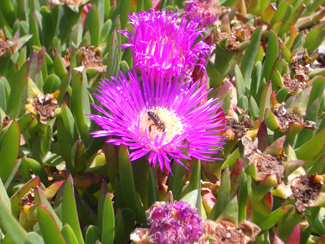Strength of invasive plants

Biological invasions are produced by species transported by humans outside their region of origin to other regions where they are established and expanded. They are currently one of the biggest treats for biodiversity, along with land use change, therefore, understand the mechanisms by which compete with native species is a key factor to managing the problem.
Many aspects of competition between native and invasive plants have been studied, including competition for nutrients, space and light, but the effect on other trophic levels, such as establishing relationships with pollinators are less explored, despite the fact that pollinating insects are essential for the reproduction of most flowering plants. The few studies on the effect of invasive plants on pollination of native plant species had focused on studying experimentally the effects of invasive plant on the visits to a specific native plant species. However, the network of interactions between plants and pollinators are highly complex and is necessary to draw all their interactions to understand their structure.
Figure 1. Example of carpobrotus web (red), native plants (green) and the other different kinds of pollinators
Our work analyzes the entire network of interactions in different communities invaded by two invasive plants invading Mediterranean ecosystems. We find that the effect on the native community does not follow a single pattern. Both plants offer more showy pollen-rich flowers than the rest of native plants and receive more visits.
Image 1 Picture of a Opuntia stricta flower.
References
"Contrasting effects of invasive plants in plant-pollinator networks". Bartomeus, Ignasi; Vila, Montserrat; Santamaria, Luis. OECOLOGIA, 155 (4): 761-770 APR 2008.


